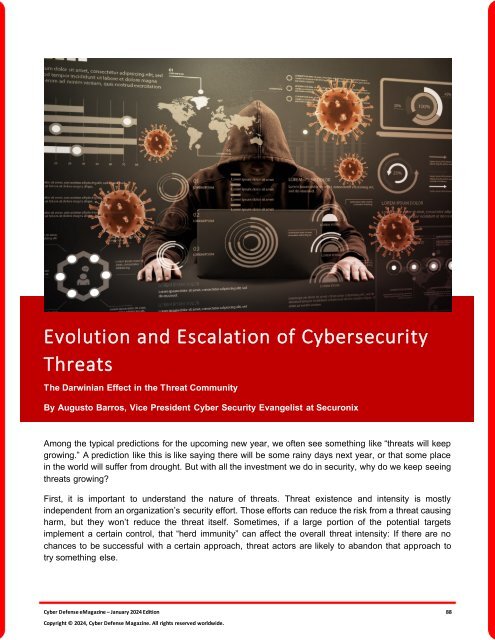The Cyber Defense eMagazine January Edition for 2024
Cyber Defense eMagazine January Edition for 2024 #CDM #CYBERDEFENSEMAG @CyberDefenseMag by @Miliefsky a world-renowned cyber security expert and the Publisher of Cyber Defense Magazine as part of the Cyber Defense Media Group as well as Yan Ross, Editor-in-Chief and many more writers, partners and supporters who make this an awesome publication! 201 page January Edition fully packed with some of our best content. Thank you all and to our readers! OSINT ROCKS! #CDM #CDMG #OSINT #CYBERSECURITY #INFOSEC #BEST #PRACTICES #TIPS #TECHNIQUES
Cyber Defense eMagazine January Edition for 2024 #CDM #CYBERDEFENSEMAG @CyberDefenseMag by @Miliefsky a world-renowned cyber security expert and the Publisher of Cyber Defense Magazine as part of the Cyber Defense Media Group as well as Yan Ross, Editor-in-Chief and many more writers, partners and supporters who make this an awesome publication! 201 page January Edition fully packed with some of our best content. Thank you all and to our readers! OSINT ROCKS! #CDM #CDMG #OSINT #CYBERSECURITY #INFOSEC #BEST #PRACTICES #TIPS #TECHNIQUES
Create successful ePaper yourself
Turn your PDF publications into a flip-book with our unique Google optimized e-Paper software.
Evolution and Escalation of <strong>Cyber</strong>security<br />
Threats<br />
<strong>The</strong> Darwinian Effect in the Threat Community<br />
By Augusto Barros, Vice President <strong>Cyber</strong> Security Evangelist at Securonix<br />
Among the typical predictions <strong>for</strong> the upcoming new year, we often see something like “threats will keep<br />
growing.” A prediction like this is like saying there will be some rainy days next year, or that some place<br />
in the world will suffer from drought. But with all the investment we do in security, why do we keep seeing<br />
threats growing?<br />
First, it is important to understand the nature of threats. Threat existence and intensity is mostly<br />
independent from an organization’s security ef<strong>for</strong>t. Those ef<strong>for</strong>ts can reduce the risk from a threat causing<br />
harm, but they won’t reduce the threat itself. Sometimes, if a large portion of the potential targets<br />
implement a certain control, that “herd immunity” can affect the overall threat intensity: If there are no<br />
chances to be successful with a certain approach, threat actors are likely to abandon that approach to<br />
try something else.<br />
<strong>Cyber</strong> <strong>Defense</strong> <strong>eMagazine</strong> – <strong>January</strong> <strong>2024</strong> <strong>Edition</strong> 88<br />
Copyright © <strong>2024</strong>, <strong>Cyber</strong> <strong>Defense</strong> Magazine. All rights reserved worldwide.

















